Regulatory
Everything You Need to Know About Chain Laws

Ion Monday, October 11, 2021
Everything You Need to Know About Chain Laws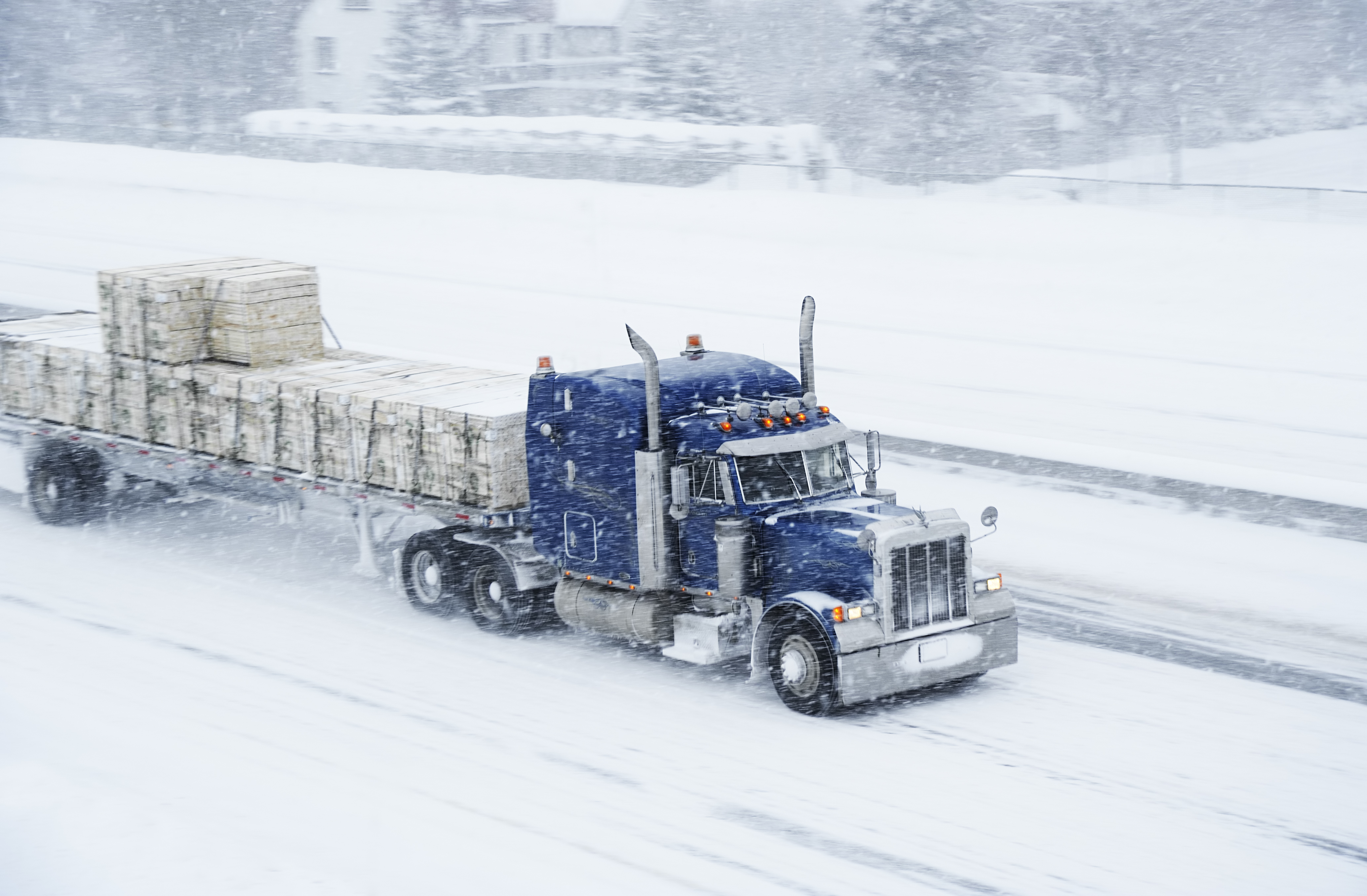
States with No Tire Chain Laws
Some states have no tire chain laws at all. These include:- Washington, D.C.
- Florida
- Hawaii
- Missouri
- New Hampshire
- Vermont
Alabama
The use of tire chains shall be permitted upon any vehicle when required for safety because of snow, rain, or other conditions tending to cause a vehicle to slide or skid.Alaska
Chain Laws:
You are not permitted to use chains from May 1 through September 15 when north of 60 North Latitude. You are not permitted to use chains from April 15 through September 30 when south of 60 North Latitude. If you are operating a vehicle on Sterling Highway, you are not permitted to use chains from May 1 through September 15. You will need to obtain a special permit from the Department of Administration if you would like to use chains in one of these prohibited zones.Arizona
The use of tire chains are allowed when required for safety during a time of snow, ice, or another condition that might cause slippery highways.Arkansas
The use of tire chains are allowed when required for safety during a time of snow, ice, or another condition that might cause slippery highways.California
Chain Laws: California does not require trucks to carry chains during any specified time period. When the weather hits, though, it takes at least eight chains for a standard tractor-trailer configuration to comply with the regulations. During the winter months, there might be traction chain controls in the mountain areas. When these are established you will see signs posted along the highway. These signs will also include the type of requirement, which will include one of the following:- R1 - Chains, traction devices or snow tires are required on the drive axle of all vehicles except four wheel/ all wheel drive vehicles.
- R2 - Chains or traction devices are required on all vehicles except four wheel/ all wheel drive vehicles with snow-tread tires on all four wheels.
- R3 - Chains or traction devices are required on all vehicles, no exceptions.
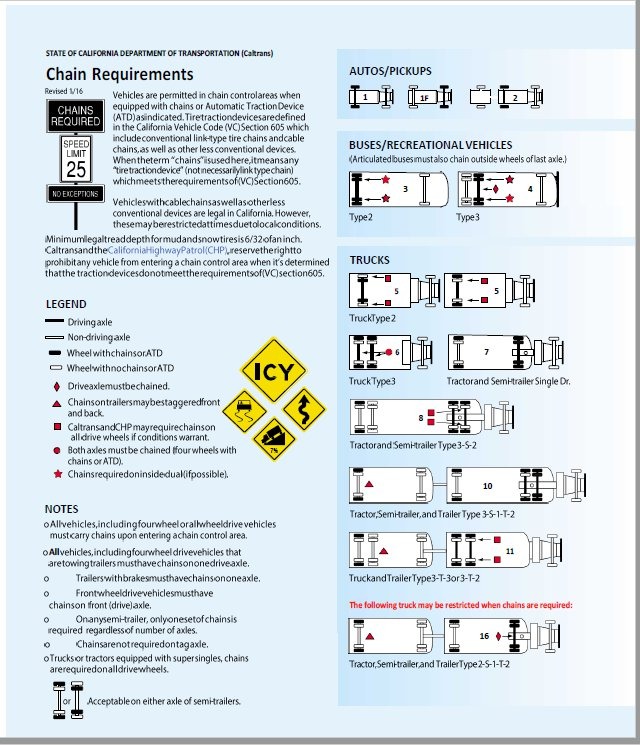
Colorado
From September 1 through May 31, all trucks must carry sufficient chains on I-70 when traveling between mile marker 259 outside Golden, CO and mile marker 133 in Dotsero, CO. If you get stopped and do not have chains on your truck, the fine is $50 plus a surcharge of $16. That said if you do not put chains on your truck when the law is in effect, the fine is $500 plus a $78 surcharge. If you do not put chains on and you end up blocking the highway, then the fine will increase to $1,000 plus a $156 surcharge. Colorado has two different types of chain laws:- Level 1 - Single-axle combination commercial vehicles must chain up. Trucks must have all four drive tires in chains. When level 1 is in effect, all other commercial vehicles must have snow tires or chains.
- Level 2 - When level 2 is in effect, all commercial vehicles are required to chain up the four drive tires.
Connecticut
Chains are permitted during hazardous weather from November 15 through April 30. The chains can not be damaging to the highway’s surface.Delaware
You are permitted to use chains on highways from October 15 through April 15.Georgia
At any time the Georgia Department of Transportation may close or limit access to certain highways during inclement weather. If this occurs, signage will be placed to inform drivers that chains are required in order to proceed. For commercial vehicles, chains must be placed on the outermost drive tires.Idaho
Officials with the Idaho Department of Transportation can determine that it is unsafe to drive over Lookout Pass and Fourth of July Pass on I-90, and Lolo Pass on Highway 12. If it is deemed unsafe, then you will be required to chain up a minimum of one tire on each drive axle and one axle at or near the rear.Illinois
The use of tire chains are allowed when required for safety during a time of snow, ice, or another condition that might cause slippery highways.Indiana
The use of tire chains are allowed when required for safety during a time of snow, ice, or another condition that might cause slippery highways.Iowa
The use of tire chains are allowed when required for safety during a time of snow, ice, or another condition that might cause slippery highways.Kansas
The use of tire chains are allowed when required for safety during a time of snow, ice, or another condition that might cause slippery highways.Kentucky
Chain Laws: No person shall use on a highway not covered with ice a vehicle with a chained wheel unless the wheel rests upon an ice-shoe at least 6 inches wide. When chains are used on rubber-tired vehicles, the cross chains shall be not more than three-fourths (3/4) of an inch in thickness or diameter, and shall be spaced not more than ten inches apart, around the circumference of the tires.Louisiana
The use of tire chains are allowed when required for safety during a time of snow, ice, or another condition that might cause slippery highways.Maine
Vehicles cannot have tires with metal studs, wires, spikes or other metal protruding from the tire tread from May 1 through Oct. 1. Other than that the use of tire chains are allowed when required for safety during a time of snow, ice, or another condition that might cause slippery highways.Maryland
The use of tire chains are allowed when required for safety during a time of snow, ice, or another condition that might cause slippery highways.Massachusetts
Massachusetts prohibits the use of studded tires and chains between May 1 and Nov. 1 without a permit. The use of tire chains are allowed when required for safety during a time of snow, ice, or another condition that might cause slippery highways.Michigan
Chain Laws: The use of chains is allowed for safety when snow, ice, or other condition are present. If chains are used, they must not come in direct contact with the roads surface.Minnesota Chain Laws:
The use of tire chains are allowed when required for safety during a time of snow, ice, or another condition that might cause slippery highways.Mississippi
The use of tire chains are allowed when required for safety during a time of snow, ice, or another condition that might cause slippery highways.Montana
If the Montana Department of Transportation determines that highways are too dangerous for travel, they may establish the following recommendations on traction devices:- Chains or other approved traction devices recommended for drive wheels
- Chains or other approved traction devices required for drive wheels
- Chains required for driver wheels
Nebraska
Chain Laws: The use of tire chains are allowed when required for safety during a time of snow, ice, or another condition that might cause slippery highways.Nevada
It is unlawful for any person to operate a motor vehicle, whether it is an emergency vehicle or otherwise, without traction devices, tire chains or snow tires upon any street or highway, under icy or snowy conditions, when the highway is marked or posted with signs for the requirement of traction devices, chains or snow tires.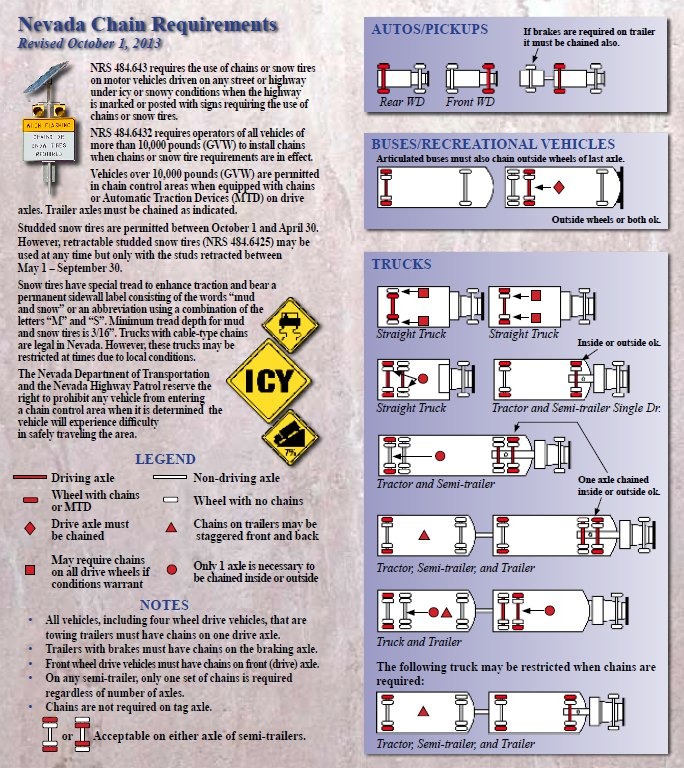
- Traction devices, tire chains or snow tires if it has a gross weight or combined gross weight of 10,000 pounds or less.
- Tire chains if it has a gross weight or combined gross weight of more than 10,000 pounds.
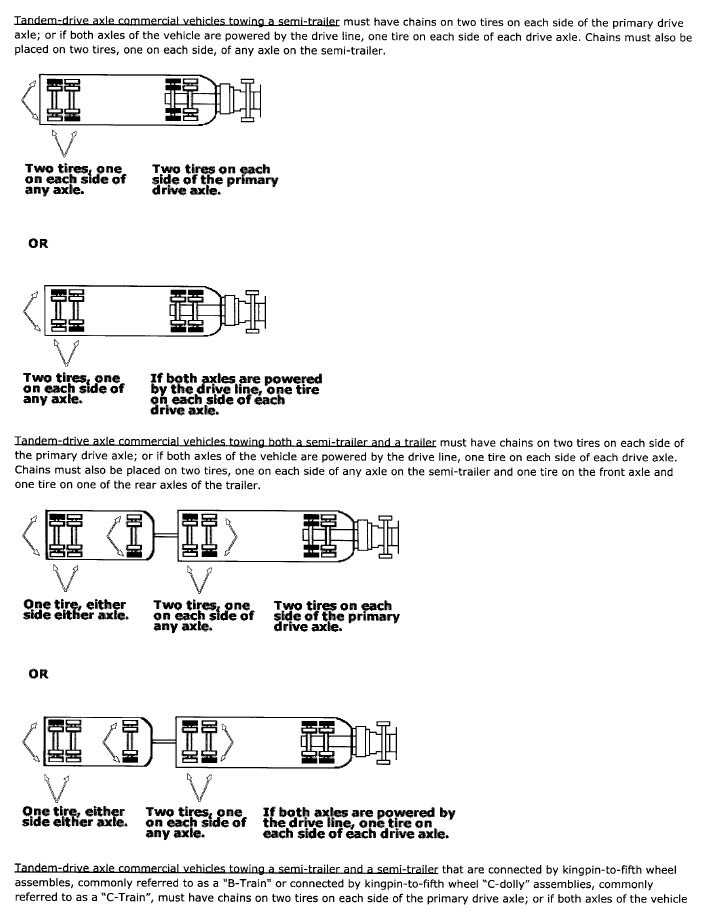
New Jersey
The use of tire chains are allowed when required for safety during a time of snow, ice, or another condition that might cause slippery highways.New Mexico
The use of tire chains are allowed when required for safety during a time of snow, ice, or another condition that might cause slippery highways.New York
The use of tire chains are allowed when required for safety during a time of snow, ice, or another condition that might cause slippery highways.North Carolina Chain Laws:
The use of tire chains are allowed when required for safety during a time of snow, ice, or another condition that might cause slippery highways.North Dakota
North Dakota also allows metal studs within 1/16 inch beyond tread from Oct. 15 through April 15. The use of tire chains are allowed when required for safety during a time of snow, ice, or another condition that might cause slippery highways.Ohio
The use of tire chains are allowed when required for safety during a time of snow, ice, or another condition that might cause slippery highways.Oklahoma
The use of tire chains are allowed when required for safety during a time of snow, ice, or another condition that might cause slippery highways.Oregon Chain Laws:
Oregon’s law applies to all highways in the state. Signs will tell you when you are required to carry chains and when you are required to use them. You will need to have six chains on hand to comply in Oregon. The use of tire chains are allowed when required for safety during a time of snow, ice, or another condition that might cause slippery highways.Pennsylvania
The use of tire chains are allowed when required for safety during a time of snow, ice, or another condition that might cause slippery highways.Rhode Island
The use of tire chains are allowed when required for safety during a time of snow, ice, or another condition that might cause slippery highways.South Carolina
The use of tire chains are allowed when required for safety during a time of snow, ice, or another condition that might cause slippery highways.South Dakota
The South Dakota DOT has the authority to restrict travel on roads. Signs will alert you to these restrictions. The use of tire chains are allowed when required for safety during a time of snow, ice, or another condition that might cause slippery highways.Tennessee
The use of tire chains are allowed when required for safety during a time of snow, ice, or another condition that might cause slippery highways.Texas
The use of tire chains are allowed when required for safety during a time of snow, ice, or another condition that might cause slippery highways.Utah
When any designated highway is so restricted no vehicle shall be allowed or permitted the use of the highway, during the period between October 1 and April 30, or when conditions warrant due to adverse, or hazardous weather or roadway conditions, as determined by the Utah Department of Transportation, unless:- An operator of a commercial vehicle with four or more drive wheels, other than a bus, shall affix tire chains to at least four of the drive wheel tires.
Vermont
Chain Laws: Vermont has a traffic committee that will decide if use of chains will be required. The use of tire chains are allowed when required for safety during a time of snow, ice, or another condition that might cause slippery highways. Vehicles with semitrailers or trailers that have a tandem-drive axle towing a trailer shall have chains:- On two tires on each side of the primary drive axle, or if both axles of the vehicle are powered by the drive line, one tire on each side of each drive axle; and
- On one tire of the front axle and one tire on one of the rear axles of the trailer.
Virginia
The use of tire chains are allowed when required for safety during a time of snow, ice, or another condition that might cause slippery highways.Washington Chain Laws:
Any commercial vehicle over 10,000 lbs. Gross vehicle weight rating should carry chains from November 1 to April 1 when driving on one of the following routes:- Blewett Pass
- Chinook Pass
- Cle Elum to Teanaway
- Gibbons Creek to Intersection of Cliffs Rd.
- Mt. Baker Highway (Ellensburg to Selah)
- Newhalem to Winthrop
- Omak to Nespelem
- Status Pass
- Sherman Pass
- Snoqualmie Pass
- Stevens Pass
- White Pass
West Virginia Chain Laws:
The use of chains is allowed for safety when snow, ice, or other condition are present. If chains are used, they must not come in direct contact with the surface of the road.Wisconsin Chain Laws:
The use of chains is allowed for safety when snow, ice, or other condition are present. If chains are used, they must not come in direct contact with the surface of the road.Wyoming
When the chain law is in effect due to snow, ice or other conditions, travel on a highway may be restricted to use only by motor vehicles utilizing adequate snow tires or tire chains. There are two levels. Level 1: When conditions are hazardous, travel can be restricted to vehicles equipped with tire chains, vehicles with adequate snow tires, or all-wheel-drive vehicles. Level 2: When conditions are extremely hazardous, travel can be restricted to vehicles equipped with tire chains or all-wheel-drive vehicles equipped with adequate mud and snow or all-weather-rated tires. The operator of a commercial vehicle shall affix tire chains to at least two (2) of the drive wheels of the vehicle at opposite ends of the same drive axle when the vehicle is required to utilize tire chains under this subsection. Any driver that is in violation will face a fine of no more than $250. If the violation results in the closure of all lanes in one or both directions of a highway, you will face a fine of no more than $750.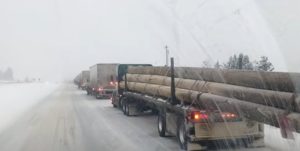 🔙Blog Page
🔙Blog Page See other news
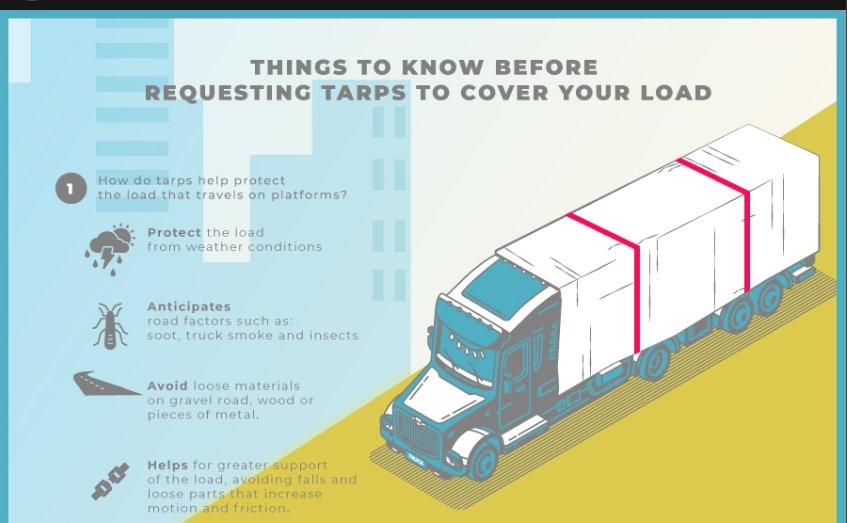
How to Tarp Flatbed Loads
👉 Tarping a load is crucial to protect both the cargo and the tarp itself. The primary reasons for tarping are to...
Read MoreProtected: Training Materials for Flatbed
There is no excerpt because this is a protected post.
Read More
How To Secure Pallet Racks
On the picture below you can see a great example how the pallet racks should be placed on the flatbed trailer...
Read MoreHow to find JGG Office
The location of the office – 800 Roosevelt Rd, Bldg A , Ste 12, Glen Ellyn, IL If you enter from south...
Read More
Photo Contest
TAKE PICTURES and VIDEOS OF YOUR TRUCK and GET THE CHANCE TO WIN A PRIZE. ✅ Just take the picture or video...
Read More
Driver Journey in joining John Galt Group Team
Read More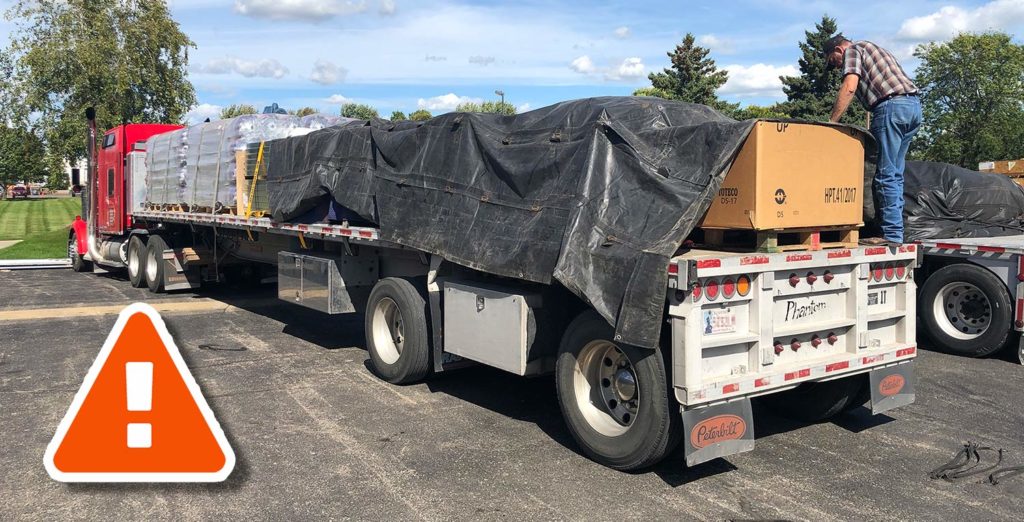
Secure and Protect: A Guide to Tarping Loads on Flatbed Trailers
Transporting goods on a flatbed trailer is an efficient and cost-effective way to move large or bulky loads across...
Read More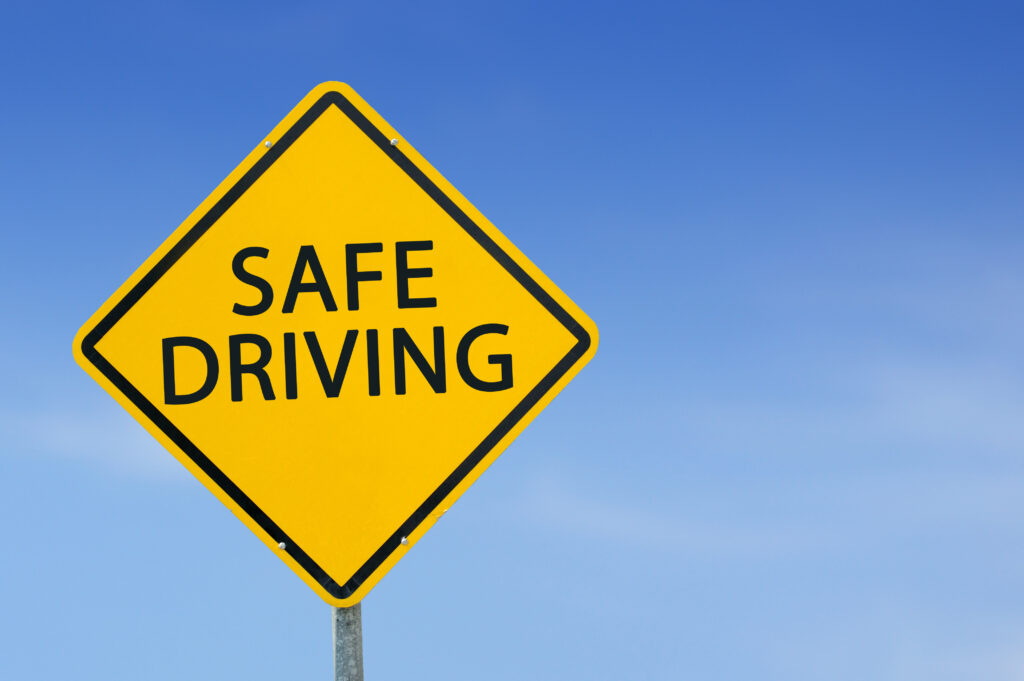
Bad weather – Safety tips for drivers
Being a truck driver comes with a lot of responsibilities, including the safety of yourself and others around you....
Read More
Load Securement Base
Here you can find information about flatbed load securement for different type of freight. Knowledge you need to...
Read More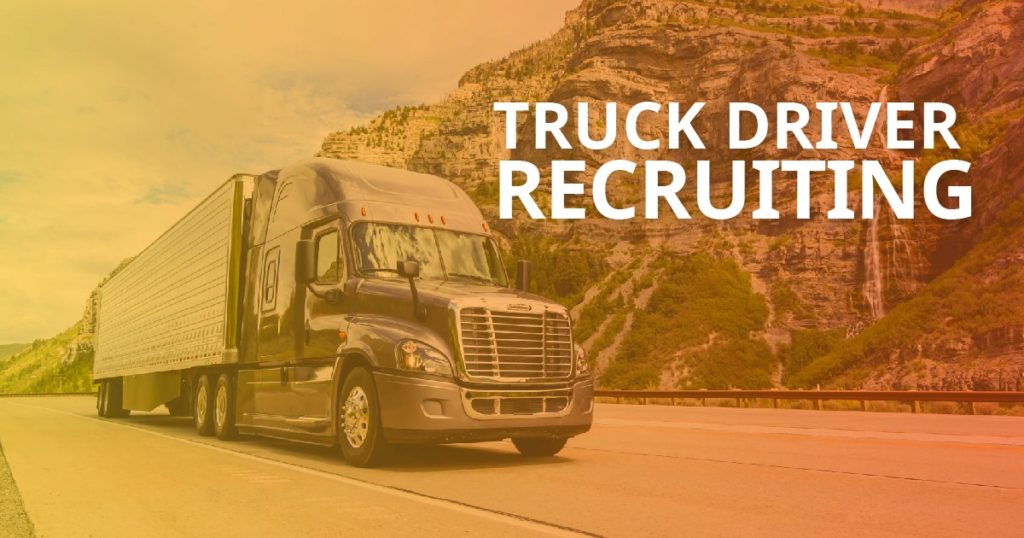
John Galt Group is looking for an Experienced Recruiter
✅ We are looking for and experienced recruiter, that has hands on experience and knows what he/she is doing in...
Read More
Legal Limits In Each State
Legal Limits In Each State To choose State, which are you looking for, hit the button “Filter” and...
Read More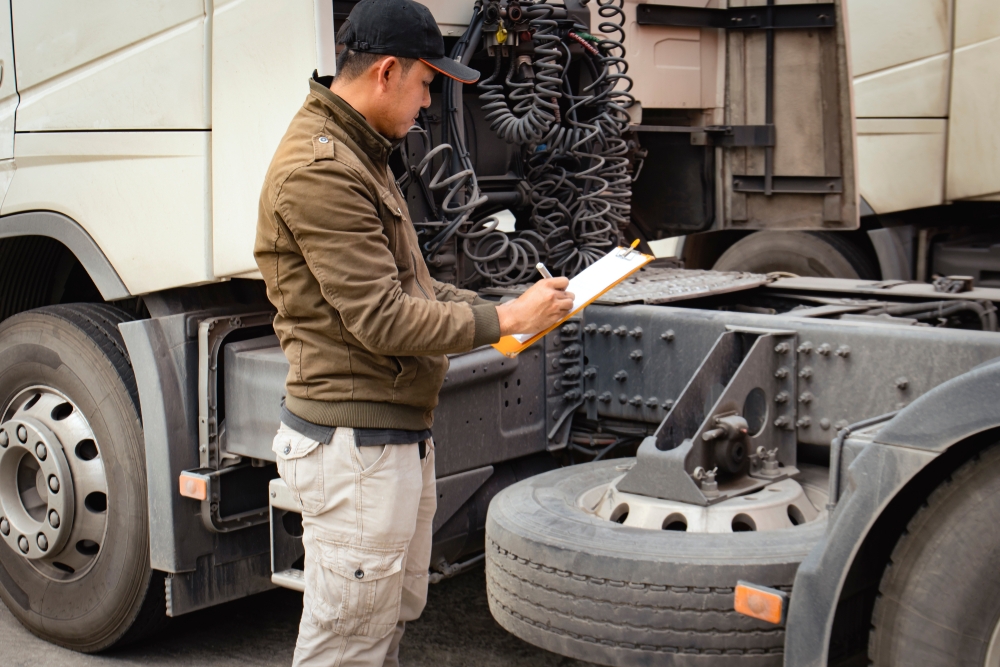
Pre- and POST-TRIP INSPECTIONS
Pre- and POST-TRIP INSPECTIONS Minimizing the road breakdowns and preventing out-of-service violations are two of...
Read More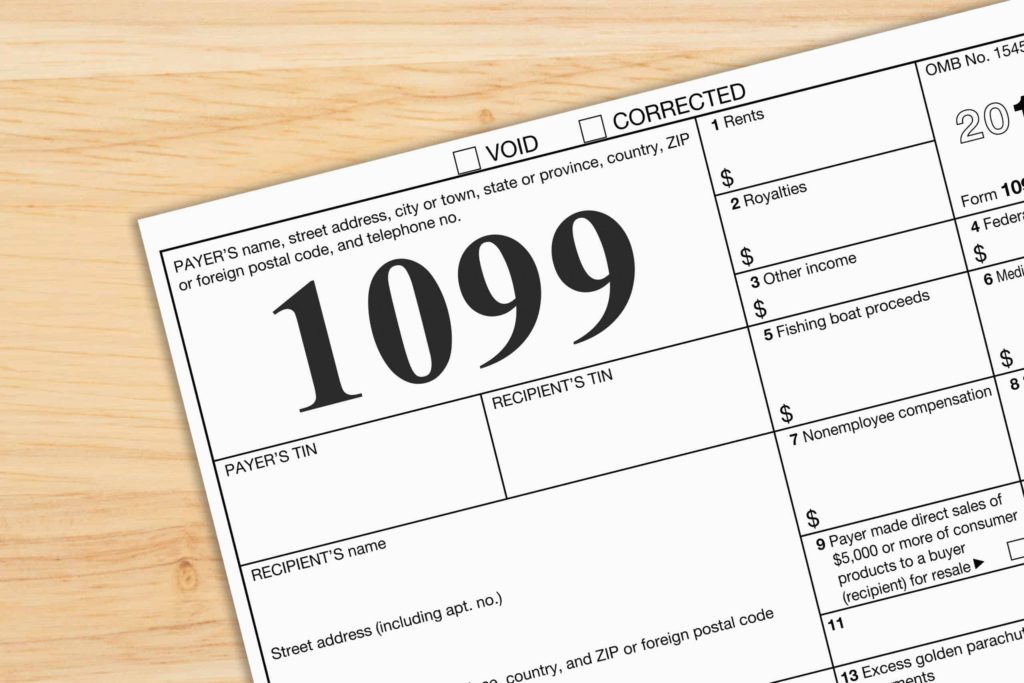
1099 form – what numbers get in the form
1099 form – what numbers get in the form 1099 form 🔙Blog Page
Read More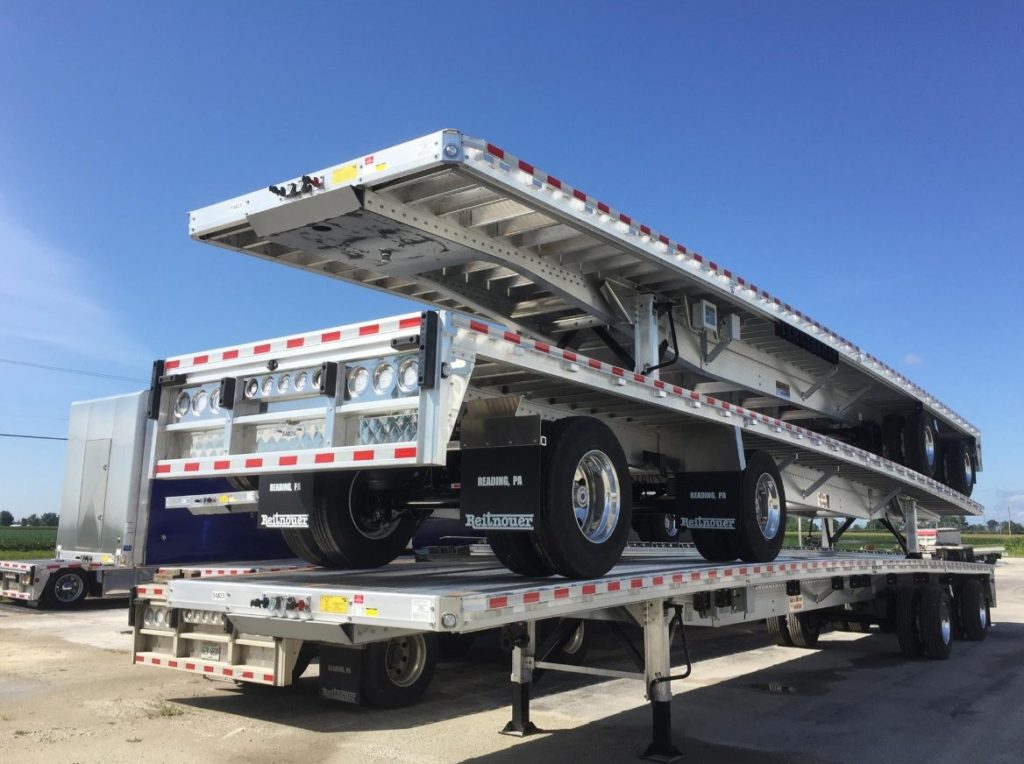
How To Secure Flatbed Trailer Stack
Flatbed Trailer Stack Use chains to secure all empty trailers to the bottom trailer. The chain in the front MUST be...
Read More
Paper Roll
Paper Roll Securement With Eye Vertical Requirements for placement paper roll: Place paper rolls together in a...
Read More
How To Secure Structural Steel
How To Secure Structural Steel Structural Steel is inherently a difficult load to secure. Different shapes and...
Read More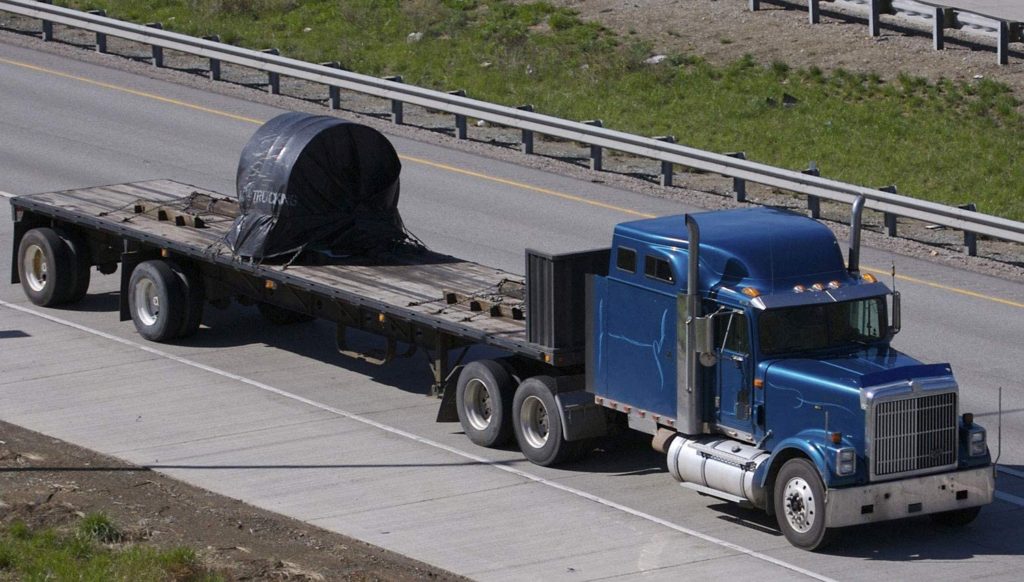
How To Secure Palletized Coil
Palletized Coils Palletized coil: We will use Coil racks to keep the steel coil from rolling and support the...
Read More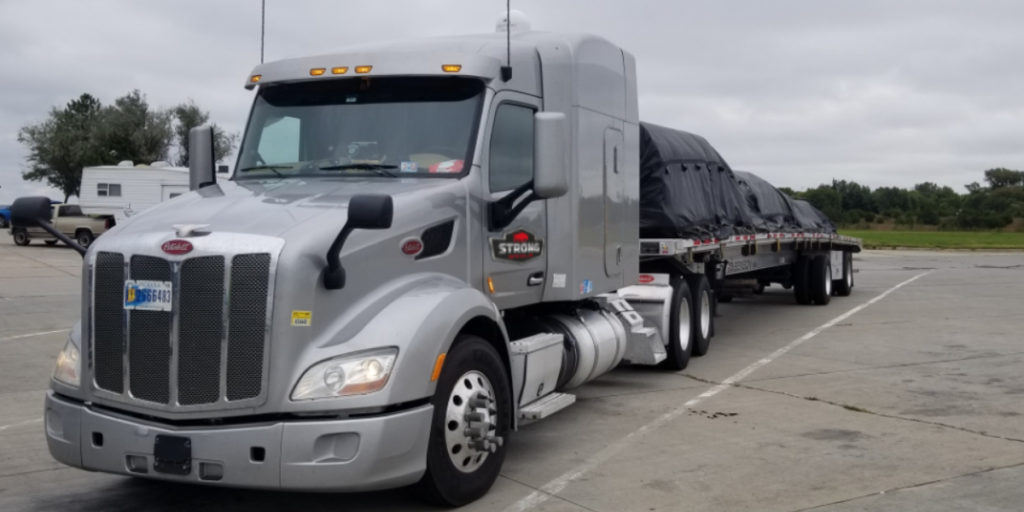
Secure A Load of Windows or any box lumber framed
Windows securement: 1 Crates on the left in the picture contain the glass for all this frames, so they are the most...
Read More
How To Secure Lumber
These rules apply to bundles of dressed lumber, packaged lumber, building products such as plywood, wallboard or...
Read More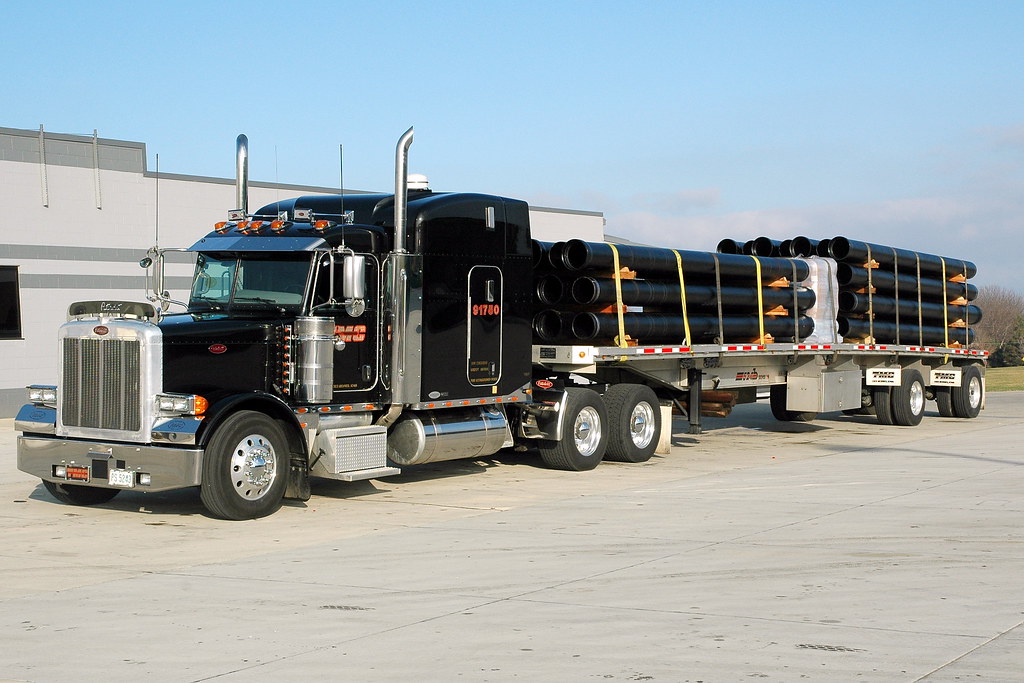
How To Secure Pipe Load
Pipe Securement. Make sure that concrete pipe doesn’t roll or slide: Load pipe as compactly as possible...
Read More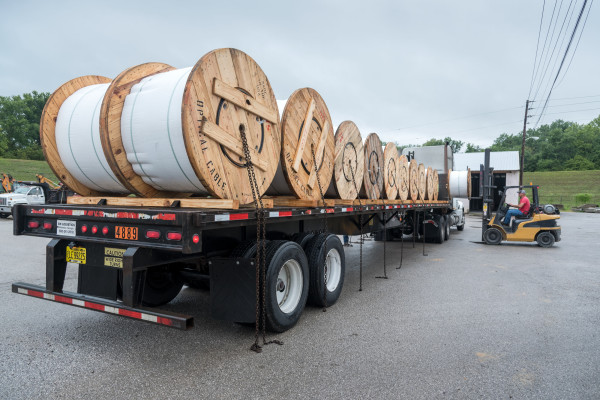
How To Secure Spools of Cable and Wire Bundles
Spools of Cable and Wire Bundles How To Secure? Spools of Cable To tie down spools you will need dunnage, chains,...
Read More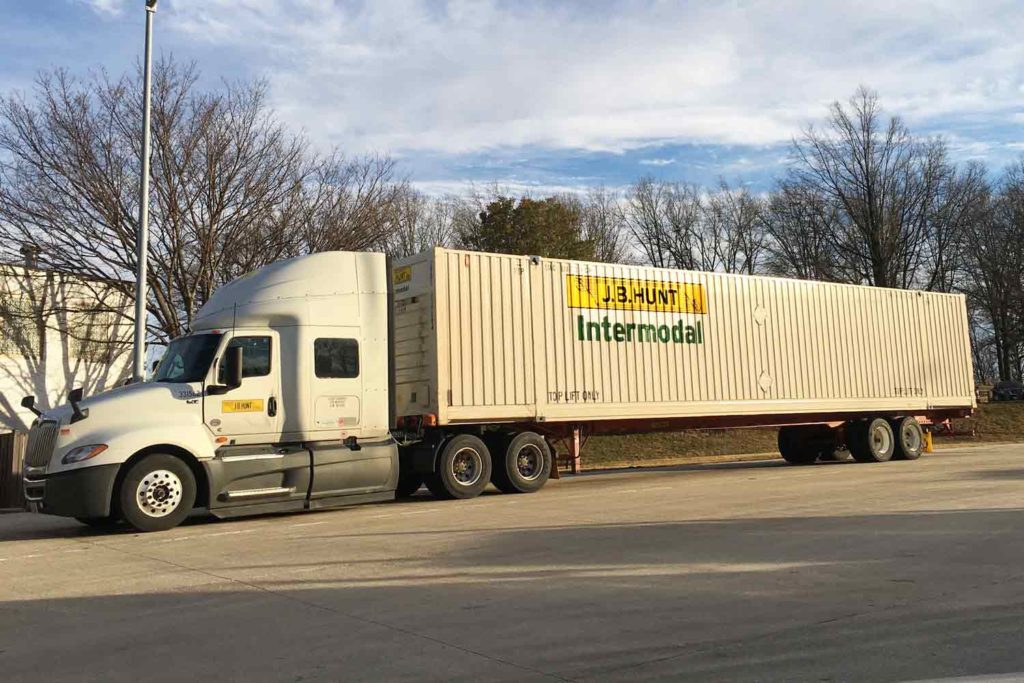
How To Secure Containers On Flatbed
How To Secure Containers On Flatbed Position of the container Container securement: All lower corners of the...
Read More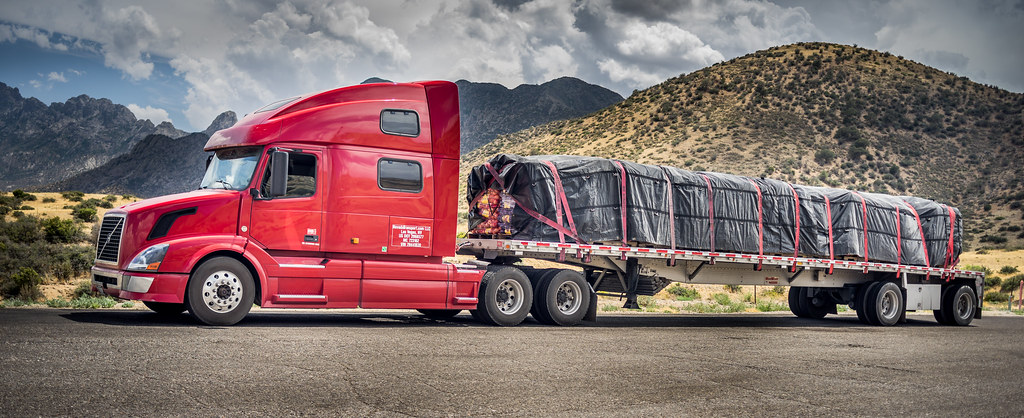
How To Secure Onion Loads
How To Secure Onion Loads Instruction for driver, onion loads: General Tips Best is to have at least half tank or...
Read More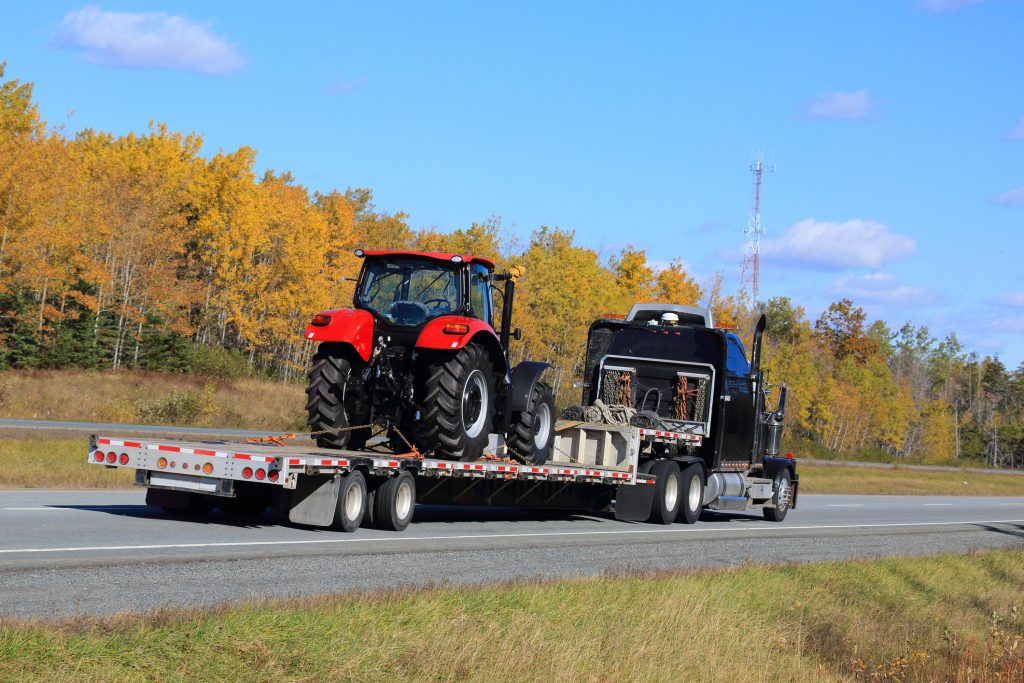
How To Secure Tractor
How To Secure Tractor: According to the FMCSA, vehicles with wheels or tracks that weigh 10,000 Lbs. or more are...
Read More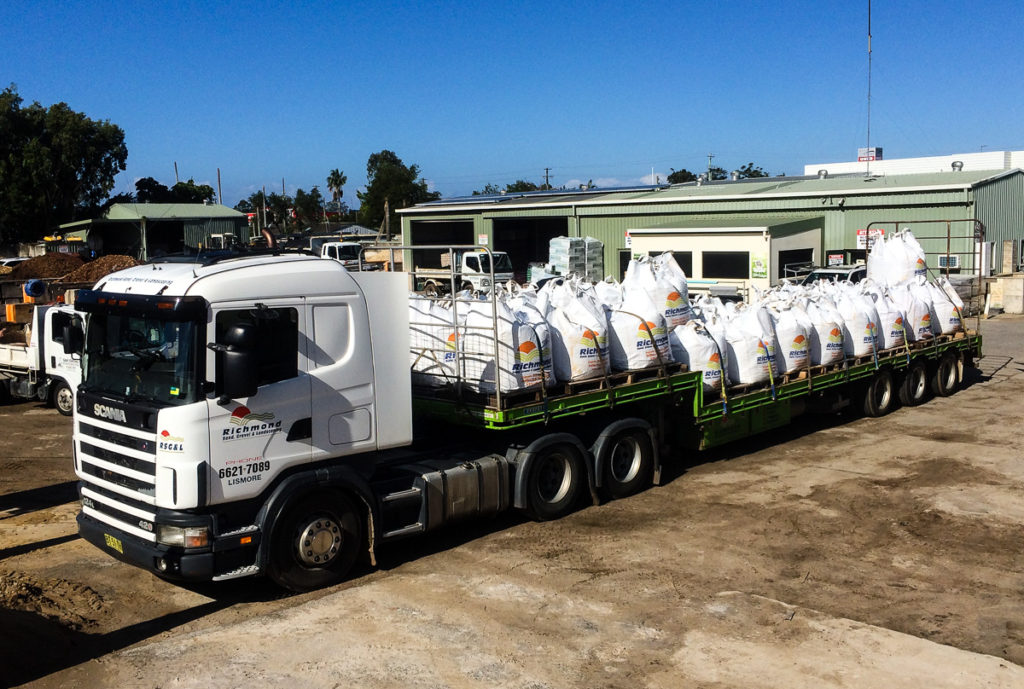
How To Secure Bags
All about bags securement Bags securement: You can use a combination of items to secure the cargo on your flatbed...
Read More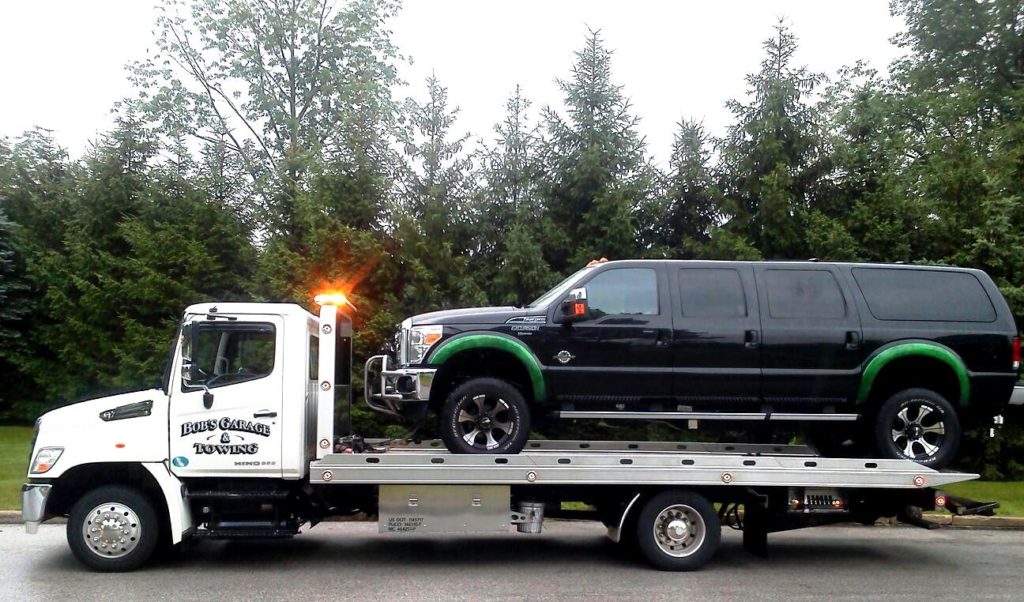
How To Secure Machinery Loads
Machinery Loads: The requirements in this section apply to the transportation of automobiles, light trucks, and...
Read More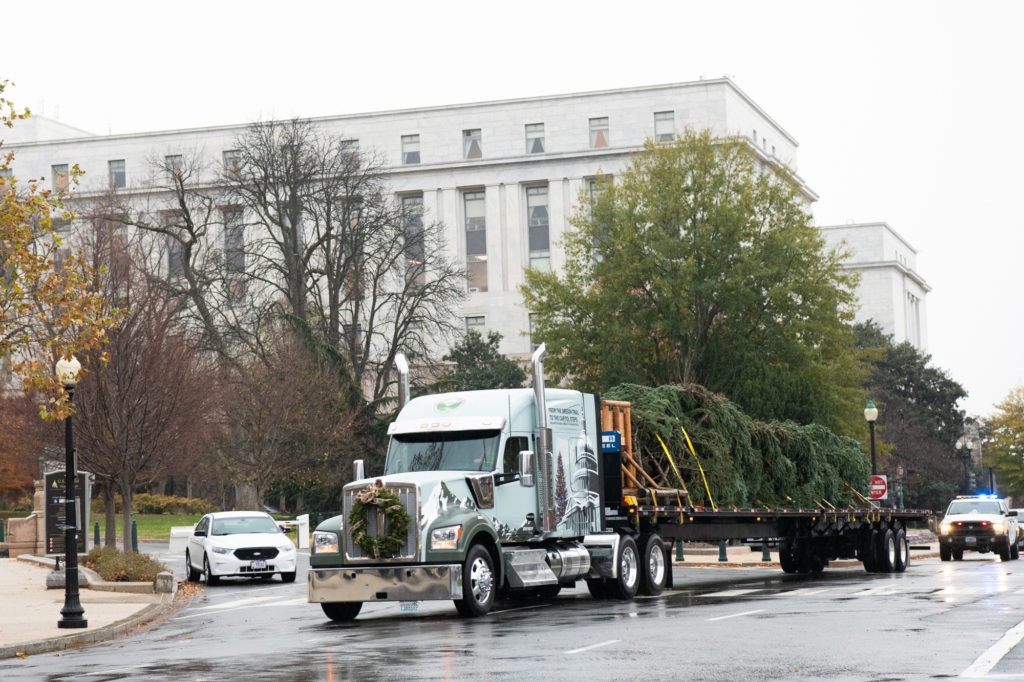
How To Secure Trees On Flatbed?
Use a breathable tarp system Secure Trees: Transporting trees can be tricky because they need to be covered with a...
Read More
Medi-Share – healthcare sharing ministry
Medi-Share – healthcare sharing ministry: Medi-share is an or organized way in which Christians share their...
Read More
OO Equipment Rental, Sale and Purchase ADs and Requests
Equipment Rental If you have any requests or have any equipment for rent or sale, please fill this Form. ...
Read More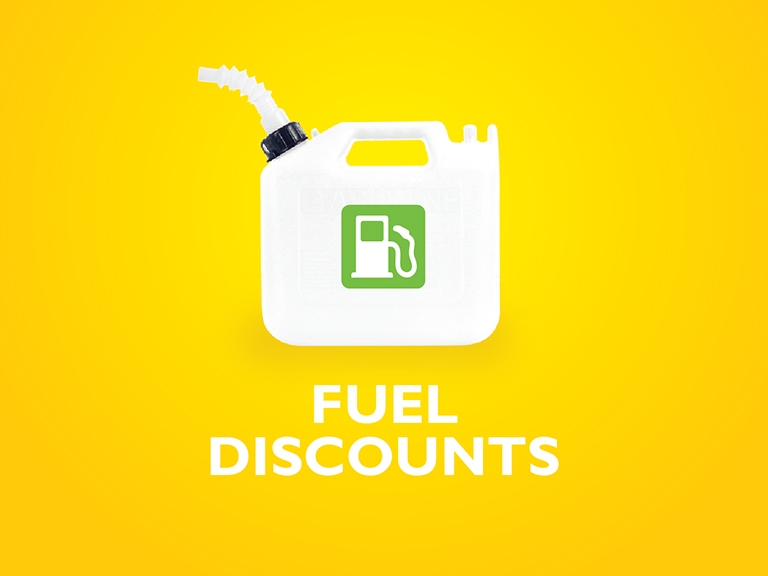
Benefits of Company Fuel Card vs NASTC and other cards
Company fuel Card vs NASTC and other cards: Benefits of Company Fuel Card vs NASTC and other cards 🔙Blog Page...
Read More
Driver Workflow at John Galt Group
Driver Workflow at John Galt Group Morning Routine Driver Workflow: After you wake up do your morning routine. It...
Read More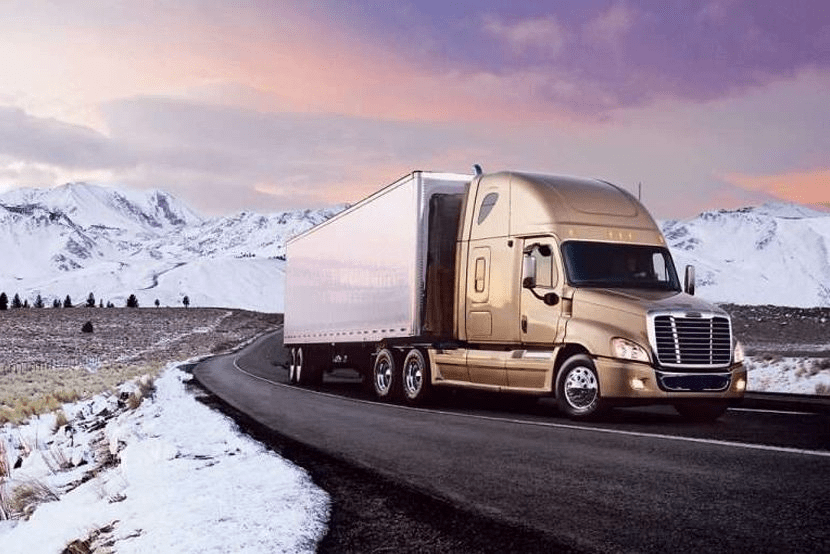
A few tips for upcoming winter season
Winter season Winter season: In this article, we want to share with you some good to know tips before winter is...
Read More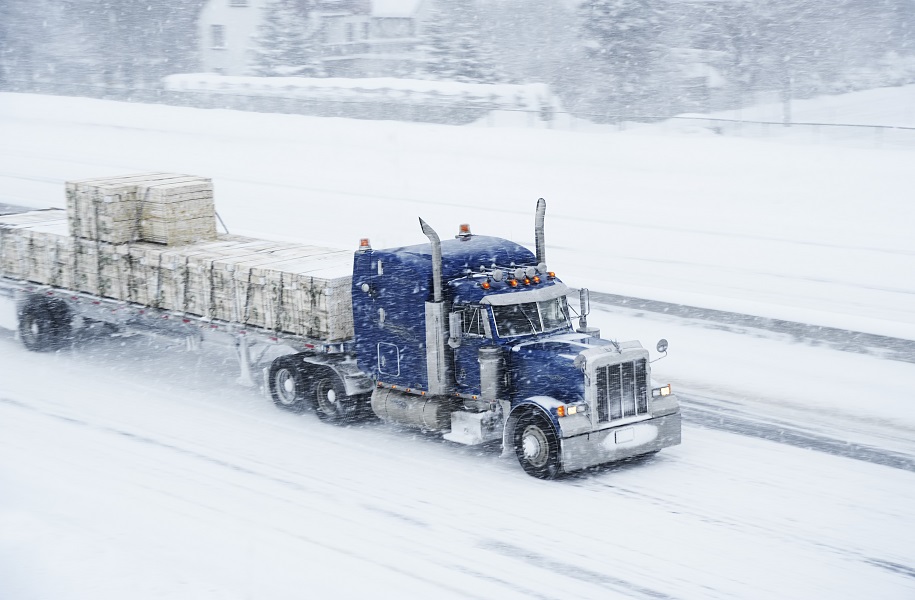
Everything You Need to Know About Chain Laws
Everything You Need to Know About Chain Laws States with No Tire Chain Laws Some states have no tire chain laws at...
Read More